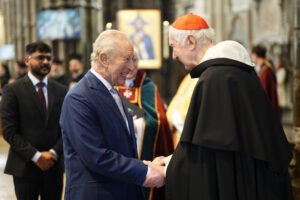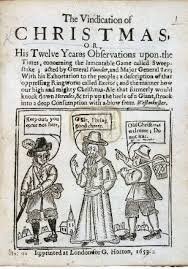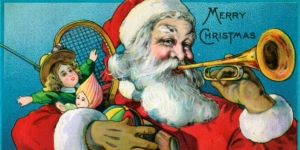The Religious Beginnings and Modern Celebrations of St. Patrick’s Day

Introduction to St. Patrick’s Day
St. Patrick’s Day, observed on March 17th, commemorates the life and legacy of St. Patrick, the patron saint of Ireland. This day holds significant importance as it marks both a religious observance and a celebration of Irish culture worldwide. The origins of St. Patrick’s Day can be traced back to the 17th century when it became an official feast day recognized by the Catholic Church. St. Patrick is credited with bringing Christianity to Ireland, a mission that began in the early 5th century. His achievements, particularly the conversion of many Irish people to Christianity, solidified his status as a key figure in Irish religious history.
Initially, St. Patrick’s Day was a solemn religious occasion, with observances typically involving church services and refraining from the consumption of alcohol. The day was aimed at reflection and spirituality, allowing followers to honor the contributions of St. Patrick to the faith and the nation. However, over the years, particularly following Irish immigration to the United States during the 19th century, the holiday underwent significant changes. It transformed from a primarily religious observance into a broader celebration of Irish heritage, culture, and pride. Traditional Irish symbols, such as the shamrock, became emblematic of the day, representing the Holy Trinity, which St. Patrick is said to have famously illustrated to the pagan Irish.
Today, St. Patrick’s Day is celebrated with parades, music, dancing, and various festivities that showcase Irish culture. Major cities around the world, including New York, Chicago, and Dublin, host vibrant events, drawing millions to partake in the joyous celebrations. This evolution from a deeply religious holiday to a global cultural phenomenon underscores the importance of understanding both its historical roots and contemporary significance as a day devoted to celebrating the rich traditions of Ireland.
Who Was St. Patrick?
St. Patrick, one of Christianity’s most revered figures, is known primarily as the patron saint of Ireland. Born in the late 4th century in Roman Britain, he was originally named Maewyn Succat. At the age of sixteen, he was captured by Irish raiders and brought to Ireland as a slave. During his six years of captivity, he turned to Christianity for solace, developing a deep spiritual connection that would influence his future.
After escaping and returning to his family, Patrick felt a calling to become a missionary. He underwent religious training and, upon his return to Ireland around 432 AD, began his mission to convert the Irish to Christianity. His journey was marked by determination and resilience, as he faced significant opposition from the local pagan chieftains. Despite the challenges, he established numerous churches, schools, and communities, playing an instrumental role in laying the foundation for Christianity in Ireland.
Numerous legends surround St. Patrick, contributing to his status as a cultural icon. One of the most famous stories is that he banished snakes from Ireland, symbolizing the expulsion of pagan practices. This act is often interpreted as a metaphor for his mission to rid the Irish of their former belief system. Additionally, it is said that he used the three-leafed shamrock to explain the Holy Trinity, thereby solidifying its association with both him and Ireland.
St. Patrick’s contributions to Christianity not only transformed Ireland but also established a legacy that transcends religious boundaries. His efforts were pivotal in shaping the cultural identity of Ireland, and his life continues to be celebrated on March 17th each year, marking St. Patrick’s Day with festivities and observances around the globe.
The Religious Significance of St. Patrick’s Day
St. Patrick’s Day, celebrated annually on March 17th, marks the death of St. Patrick, the patron saint of Ireland. This day has significant religious importance for Christians around the world, particularly those of Irish descent. It serves as an occasion to remember and honor St. Patrick’s contributions to Christianity in Ireland during the 5th century. He is credited with bringing Christianity to the Irish people, famously using the three-leafed shamrock to explain the concept of the Holy Trinity.
On St. Patrick’s Day, many Christians attend mass and church services, reflecting on the life and teachings of St. Patrick. These gatherings are characterized by prayers and hymns that celebrate his role in spreading Christianity in a land previously steeped in paganism. The observance of this day often includes a special mention in homilies and prayers asking for St. Patrick’s intercession for the faithful and their communities.
The significance of March 17th extends beyond remembrance; it is also a day for personal reflection and spiritual renewal. Individuals often take this opportunity to evaluate their faith and express gratitude for the contributions of saints like St. Patrick who have influenced their spiritual journeys. This day fosters a sense of unity among Christians, promoting fellowship and community as individuals share their faith experiences, often over communal meals and gatherings after church services.
In summary, St. Patrick’s Day is deeply rooted in religious tradition, offering Christians an occasion to celebrate their faith while honoring the legacy of a man whose life profoundly impacted an entire nation. Through continued observance of this day, believers reinforce their connection to their spiritual heritage and to one another, upholding a legacy that bridges the past with contemporary expressions of faith.
Traditional Irish Customs and Folklore
The celebration of St. Patrick’s Day is steeped in rich traditional Irish customs and folklore, many of which have become integral to the cultural heritage of Ireland. At the heart of these customs is the shamrock, often regarded as a symbol of Ireland itself. According to legend, St. Patrick utilized the three-leafed shamrock to explain the concept of the Holy Trinity to the Irish people, embodying the Father, Son, and Holy Spirit. This association has led to the widespread use of shamrocks not just on St. Patrick’s Day but also as a national emblem.
Another key aspect of traditional celebrations is the myriad of rituals and legends that accompany this festive day. For example, one common custom involves wearing green clothing or accessories, believed to bring good luck and ward off mischievous leprechauns. Folklore suggests that wearing green makes one invisible to these mythical creatures, thus avoiding their playful tricks. In addition to the color green, many engage in parades and communal gatherings that highlight music, dancing, and storytelling, connecting participants to their ancestral roots and communal identity.
Furthermore, folklore is brimming with tales of St. Patrick himself, including stories of him banishing snakes from Ireland and performing miracles, which further underscores his significance as a protector of the Irish people. As families come together to celebrate, they often recount these stories, preserving the oral traditions that embody the essence of Irish culture. Such anecdotes not only enhance the festivities but also foster a a sense of unity among the participants, reminding them of their shared history. Ultimately, when one delves into the traditional Irish customs and folklore associated with St. Patrick’s Day, it becomes evident that this celebration transcends mere festivity, privileging cultural expression and communal bonds.
Modern Celebrations of St. Patrick’s Day
St. Patrick’s Day, celebrated on March 17, has evolved into a global event that encapsulates both cultural and religious significance. Today, the holiday is widely recognized beyond its Irish roots, becoming a symbol of Irish culture around the world. Major cities, such as New York, Chicago, and Dublin, host grand parades that showcase not only traditional Irish music and dance but also vibrant floats and community participation.
These parades often see participants dressed in green attire, adorned with shamrocks and other emblems associated with Irish heritage. The color green represents the lush landscapes of Ireland and is a prominent feature of St. Patrick’s Day celebrations. Events such as these turn city streets into bustling festivals, with thousands of attendees joining the festivities, reinforcing both camaraderie and celebration of Irish culture.
In addition to parades, numerous festivals take place globally to commemorate St. Patrick’s Day, often featuring live performances showcasing traditional Irish music and dance. From folk groups to contemporary bands, these events foster a lively atmosphere where people can immerse themselves in the rich cultural heritage that accompanies the holiday. Furthermore, businesses, particularly those in the food and beverage industry, capitalize on this enthusiasm by offering themed promotions, including green drinks and traditional Irish dishes, such as corned beef and cabbage.
On a more personal level, families and friends often gather to celebrate St. Patrick’s Day with private parties, incorporating elements of the holiday, like Irish storytelling and traditional cuisine. This blending of public and private celebrations contributes to the day’s significance, allowing individuals to connect with their roots, whether through religious observance or cultural festivities. As communities around the globe embrace St. Patrick’s Day, the holiday continues to promote a sense of unity, celebrating both heritage and shared experiences among those of Irish descent and beyond.
St. Patrick’s Day Around the World
St. Patrick’s Day, celebrated on March 17, has transcended its origins in Ireland to become a global phenomenon, with festivities occurring in various countries and cities. Ireland, of course, boasts some of the most vibrant celebrations, particularly in Dublin. Here, the festival is marked with parades showcasing elaborate floats, traditional Irish music, and dance performances. Dublin’s streets are awash with people dressed in green, symbolizing their connection to Irish heritage and pride.
In the United States, cities such as New York and Chicago have adopted the tradition with gusto. New York City hosts one of the largest St. Patrick’s Day parades in the world, featuring thousands of participants marching along Fifth Avenue, reflecting the significance of Irish-American culture. Similarly, Chicago famously dyes its river green, an impressive visual spectacle attracting both locals and tourists alike. These celebrations represent a blend of cultural pride and community spirit, highlighting the influence of Irish immigrants in shaping American identity.
Moreover, places like Tokyo and Sydney have also embraced St. Patrick’s Day with enthusiastic participation from locals and expatriates alike. In Tokyo, you can find parades and events promoting Irish culture, while Sydney showcases its own festivities, including music, dance, and food festivals. These events cater to a diverse audience and encourage participation from people of various backgrounds, emphasizing the universal appeal of the holiday.
Overall, St. Patrick’s Day serves as a testament to the resilience and worldwide influence of Irish culture, showcasing how a local tradition can grow into a global celebration of heritage. By commemorating this day, people from all walks of life join in the celebration of Irish history, fostering a sense of unity and admiration for the Irish way of life.
The Role of Food and Drink in Celebrations
Food and drink play a pivotal role in the celebration of St. Patrick’s Day, deeply intertwined with the holiday’s cultural and religious roots. Originally, St. Patrick’s Day was modestly marked with simple meals, often aimed at reflection and observance of the day rather than festivity. However, culinary traditions have since evolved, and today, specific dishes are emblematic of this vibrant celebration. Among these, corned beef and cabbage stands out as a quintessential meal associated with St. Patrick’s Day lore. This dish, now popular in Irish-American communities, has its origins in the early 20th century, where Irish immigrants adopted it as a substitute for the traditional Irish bacon, which was less accessible. Serving this particular dish during festivities symbolizes both heritage and connection to the past.
Alongside these mainstay dishes, beverages also hold significance in St. Patrick’s Day festivities. Irish whiskey, with its smooth, rich flavors, has become a celebratory staple. Traditionally sipped neat or mixed in cocktails, it represents the convivial spirit of the day. Furthermore, stout, particularly the famous Guinness, has reached iconic status on St. Patrick’s Day. Its dark, creamy richness and robust flavors make it a favored beverage among celebrants. The act of raising a glass of Irish stout or whiskey to toast in honor of St. Patrick fosters a sense of community among revelers, reinforcing social bonds through shared experiences.
Over the years, these culinary customs have not only provided sustenance but have also served to strengthen family traditions and communal celebrations. From traditional Irish recipes to modern adaptations, the evolving food and drink landscape showcases the spirit of inclusivity associated with St. Patrick’s Day. The blending of old and new reflects the holiday’s ability to unite people across diverse backgrounds, all coming together to celebrate a shared connection to Irish heritage and culture. As St. Patrick’s Day continues to thrive in contemporary society, food and drink will undoubtedly remain at its heart.
Commercialization of St. Patrick’s Day
The commercialization of St. Patrick’s Day has significantly altered its perception and celebration, steering the focus from its religious roots towards a more consumer-driven approach. Originally commemorated as a feast day in honor of St. Patrick, the patron saint of Ireland, the holiday has evolved into a globally recognized event characterized by parades, festivities, and extensive marketing campaigns. This transformation can be partly attributed to the increasing influence of consumerism, where the holiday is leveraged by businesses to boost sales and attract customers.
From the early 20th century, St. Patrick’s Day began to take on a more festive character, particularly in countries like the United States where large Irish communities congregated. Rather than merely being a religious observance, it became an opportunity for individuals and businesses alike to capitalize on cultural pride through themed events and product promotions. This trend has continued to grow, leading to the proliferation of St. Patrick’s Day merchandise that includes everything from clothing to food and beverages. Iconic symbols such as shamrocks, leprechauns, and the color green are now heavily marketed, sometimes overshadowing the significance of the holiday itself.
Moreover, the elements of commercialism present in St. Patrick’s Day celebrations embody a broader trend seen across many holidays, where the original meanings may become obscured by marketing efforts. While businesses benefit from heightened consumer spending during this time, the commercialization raises questions about the impact of consumerism on cultural traditions. Many express concerns that the emphasis on profit can dilute the authentic representation of St. Patrick’s Day, reducing its depth to mere transactional interactions rather than meaningful reflection on heritage or faith.
As St. Patrick’s Day continues to evolve, the balance between genuine celebration and commercialization remains a point of discussion. The challenge lies in preserving the essence of this significant day while acknowledging the reality of its commercial implications.
Conclusion: Reflecting on the Dual Nature of St. Patrick’s Day
St. Patrick’s Day represents a fascinating convergence of religious observance and secular celebration, illustrating how traditions can evolve over time while retaining their core significance. Originating as a feast day to honor St. Patrick, the patron saint of Ireland, the day has traditionally held profound religious meaning, focusing on themes of reflection, penitence, and spirituality. However, as the holiday spread globally, especially among Irish diaspora communities, it transformed into a vibrant festival steeped in cultural pride and communal joy.
The secular aspects of St. Patrick’s Day, characterized by parades, festive gatherings, and the well-known symbols of shamrocks and leprechauns, highlight the ability of cultural practices to adapt to contemporary society. These modern festivities invite individuals from diverse backgrounds to participate in the celebrations, reinforcing a sense of unity among people. The playful nature of contemporary St. Patrick’s Day events fosters inclusivity, allowing people who may not share the holiday’s religious roots to join in the merriment, ultimately broadening the holiday’s appeal.
Despite this shift toward secularism, it remains vital to acknowledge and honor the origins of St. Patrick’s Day as a day dedicated to spiritual reflection. Understanding its history allows participants to appreciate both the profound cultural significance and the joyous celebration it has become. In navigating this duality, individuals can engage with St. Patrick’s Day in a manner that respects its roots while fully embracing the communal celebrations that characterize modern observances. Balancing these elements fosters a deeper connection to the holiday, enriching the experience for everyone involved, regardless of their personal beliefs or background.









Leave a Reply
You must be logged in to post a comment.